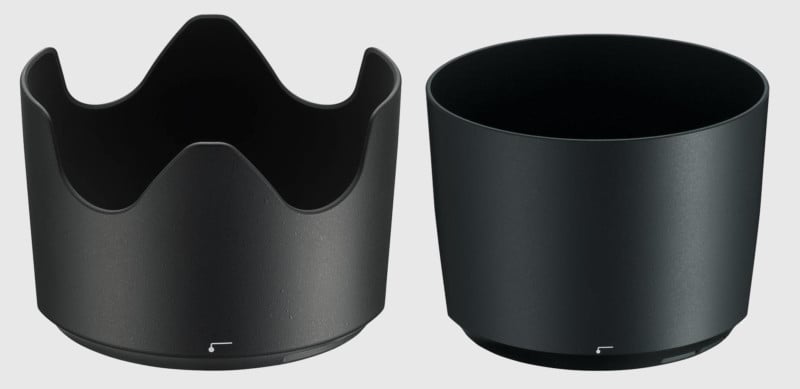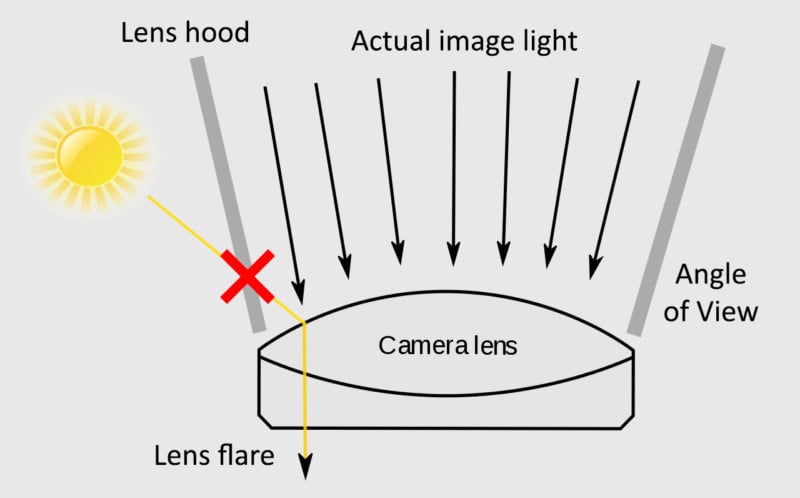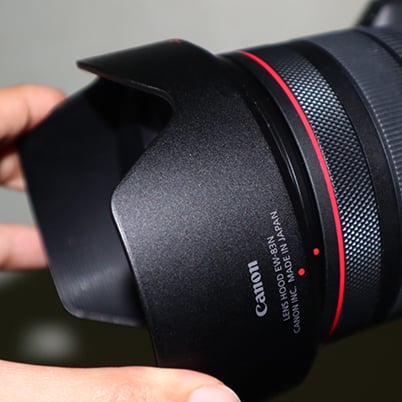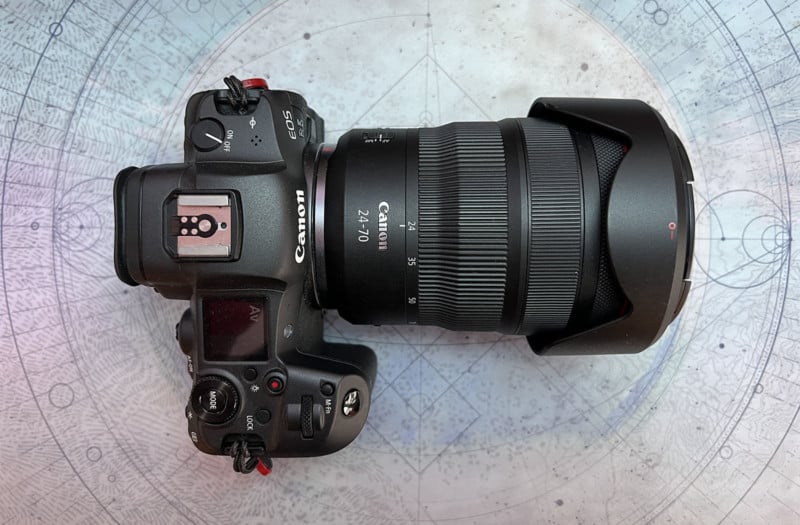Table of Contents
![]()
Anytime you invest in a new camera lens, you will frequently get a free lens hood provided with your order. And while many photographers go away it on devoid of contemplating 2 times about what it does, this helpful resource is not just for demonstrate.
Lens hoods can help you attain the results you drive in your visuals by excluding unwanted glare and flare, and they’re also an critical device if you want to steer clear of creating significant damage to your lens. But which situations are best to use your lens hood in, and when really should you contemplate taking it off? Let’s obtain out.
Desk of Contents
What is a Digicam Lens Hood?
A lens hood is an accent that you attach to the front of your camera lens. Even though it is usually created of plastic or metallic, you can also make a single by yourself utilizing any gentle-blocking content.
You will typically locate two kinds of lens hoods petal lens hoods have not got corners, while tube types are thoroughly circular. The variety of lens hood you use will rely largely on your camera’s sensor form and the lens you join to your digicam.

Why Ought to You Use a Lens Hood?
Reason #1: Unwelcome Mild
One of the main meant rewards of a lens hood is to continue to keep undesirable mild out of their photographs by blocking mild sources that would otherwise lead to glare or lens flares.
The design of just about every lens hood is such that it will enable immediate incoming light-weight from in the lens’s angle of look at whilst blocking out stray light-weight rays from outdoors the angle of perspective.
Both equally petal and tube lens hoods do a good (pun meant) work of halting stray gentle from moving into the lens, producing it less complicated to capture your preferred shot in disorders wherever you have to deal with excessive lighting.

Purpose #2: Defense from Destruction
In addition to its optic-associated added benefits, lens hoods are also normally utilised as a way to protect a lens, the two from destruction as very well as from the factors. Lens hoods can assist secure your lens from sustaining harm that stops it from operating thoroughly, these kinds of as cracked glass.
Your lens hood is likely the first factor that will hit the ground if you drop your camera even if it breaks, changing the hood is considerably less highly-priced than repairing or changing a lens. It can also, along with a lens filter, defend the entrance glass factor of your lens from scrapes and cracks if the lens accidentally swings and collides with some thing head-on.
Purpose #3: Maintaining the Lens Apparent
You can also use your lens hood to take superior pictures in terrible temperature. Keeping the include on your digicam will make it more difficult for precipitation to get into the lens, allowing for you to aim on capturing your wished-for shot as an alternative.
When Should really You Use a Lens Hood?
So far in this posting, you have discovered the essentials of a lens hood and why you should look at using a single. To assist you use yours extra successfully, it is truly worth contemplating the distinct situations wherever owning a single will reward you.
When You Want Distinction in Your Photographs
If you’ve at any time photographed on a sunny working day just before, you will know that building illustrations or photos with contrast is in some cases challenging.
Retaining your lens hood on will enable you to stay away from losing distinction, meaning that you only require to make tweaks in the course of the write-up-production phase – as opposed to more drastic edits due to unfavorable light hitting the lens.
In Circumstances with Numerous Light-weight Resources
Pictures is mostly about lighting, but way too lots of sources of mild can make it tricky to shoot without the need of undesired gentle leaking into your images. Irrespective of how excellent your composition was, flawlessly correcting a photograph with mild challenges in write-up-creation can be challenging if not difficult.
In Rough and Rugged Spots
The spectacular normal landscapes of nations like Norway and Iceland make them great destinations for photographers. However, you may well occasionally come across by yourself in elements of individuals (and related) places in which dropping your digital camera or bumping it into issues like rocks is a hazard.
![]()
If you are nervous about dropping your digicam, your lens hood can at least present a very little protection. Illustrations of scenarios where by you could want to take into account working with a single for protective applications include climbing on rocky terrains, when you’re out and about in a metropolis, and when photographing indoors on challenging (and most likely slippery) flooring.
You need to, of course, also consider obtaining a sturdy and safe strap to protected your camera superior.
When Should not You Use a Lens Hood?
Irrespective of the quite a few rewards of applying lens hoods, you’ll want to imagine twice about utilizing one in specified scenarios.
Windy Temperature
Photographing in windy weather conditions is a challenge for even the most skilled photographers. Digicam lens hoods can sometimes act as a sail all through significant winds, resulting in digicam shake and blurry photos. Or worse, they could trigger your tripod-mounted digicam to topple in excess of.
Getting the cap off can be a very good strategy if you are employing a slower shutter pace and a lot more of a telescopic lens. If your pictures are even now blurry following executing so, you can always stabilize your digital camera with a strong (potentially weighted) tripod or one more flat floor.
Overcast But Dry Climate
Though making use of a lens hood can aid continue to keep water away from the glass, you need to also recall that their key task is to reduce the volume of mild coming into the lens. Lights degrees are obviously decreased for the duration of overcast temperature, and lens flare is not as substantially of an concern.
If you’re photographing in cloudy weather conditions and it’s not raining, you can contemplate leaving your lens hood off. You can maintain it in your bag in situation conditions alter later.
When You Want Lens Flare in Your Photos
Often, lens flare can assistance make improvements to the search and come to feel of a photograph. Think about golden hour, when you can see the sun’s shining rays in your photograph, for illustration.
If you want lens flare in your shots, working with a hood can get in the way of your innovative vision detach it and commence capturing.

How to Acquire a Lens Hood
If you do not presently have an provided lens hood with your lens and are hunting to obtain a person, it is significant to uncover a suitable, compatible lens hood for your distinct lens model.
Typing the design title of your lens with the words and phrases “lens hood” in a look for engine or camera retailer internet site really should carry up the correct lens hoods that function for you. You will want to double-test in the description to make sure the lens hood is in actuality intended for your unique lens — as stated previously, lens hoods are built particularly for a lens’s angle of see, so obtaining the improper lens hood can end result in issues with your last images.
How Do You Use a Lens Hood?
Making use of a lens hood is clear-cut, no matter of whether you have a petal or tube variation. All you need to have to do is set it on the front of your digicam lens and rotate it right until you listen to a clicking audio or until finally it arrives to a stop and can not rotate any further.
There will normally be indication markings on each your lens barrel and the lens hood to display wherever the two must be aligned prior to rotation.

Some lens hoods appear with locking mechanisms that use screws or other characteristics to reduce the lens hood from unintentionally finding detached from the lens, even though other individuals are merely stored in put with superior old friction.
Attempt transferring the lens hood to see it drop off quickly, which indicates it was not mounted accurately if it doesn’t, you are prepared to head out with your digital camera.
How Do You Store a Lens Hood?
In addition to eliminating a lens hood and storing it in your digicam bag, most fashionable lens hoods can be mounted in reverse on the lens when they are not necessary. Merely put your hood on the front of your lens backward and rotate it, as usual, to lock it in spot with its hood part masking the barrel of the lens in its place of extending outward.

Lens Hoods Are Far more Helpful Than You May well Believe
So, there you have it – now you know what a lens hood is, and you’re also all set to start out applying a person the right way. Much more normally than not, obtaining 1 on your camera will assistance you get the photographs you want and also lower the chance of destruction to your products.
Even though lens hoods function for most photographers, others desire to leave theirs at residence. Experiment with the two to figure out which strategy is greater for you.
Graphic credits: Inventory pictures from Depositphotos

